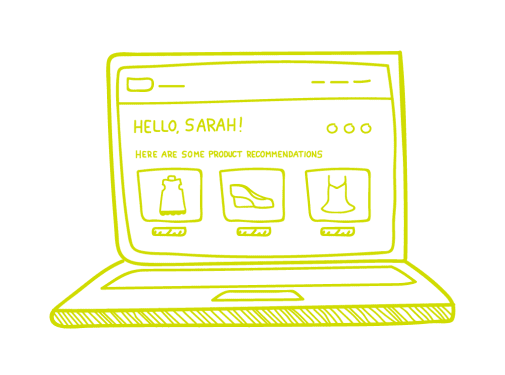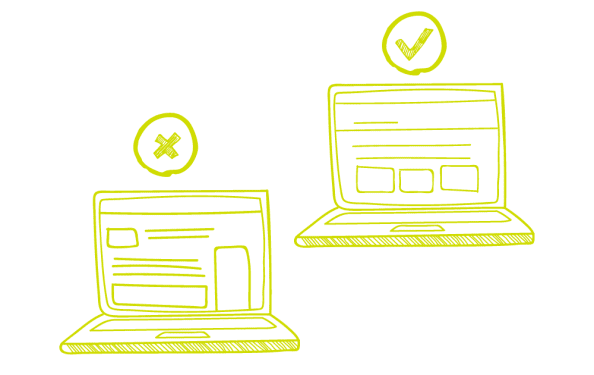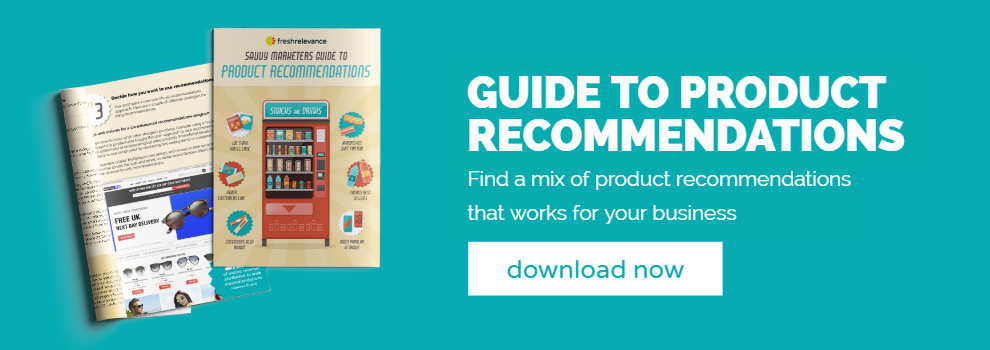If your company has an ecommerce website, the chances are you’re using automated product recommendations. Research from Internet Retailing shows that 71 percent of UK retailers use basic cross-selling recommendations as a merchandizing tactic.
So if everyone’s doing it, how can you stand out? The key is to plan your product recommendation strategy to offer the most effective content at each stage of the customer journey.
Luckily, marketers don’t have to settle for generic recommendations. The latest technology lets you provide relevant suggestions based on the wisdom of the crowd, the individual’s behavior, and their stage in the buying funnel. They can be used to enhance website personalization, boost engagement from marketing emails, and increase click throughs in cart and browse abandonment messages.
When you get it right, customers benefit from an easier, more engaging shopping experience. And happy customers are more likely make a purchase and keep coming back, increasing customer loyalty.
We’ve put together a 5-step guide to get you started. You’ll find out how to:
- Understand the different types of recommendations
- Gather the data you need
- Decide on your strategy
- Build product recommendation templates
- Measure the results
1. Understand different types of product recommendations
Before you do anything else, you need to know what types of product recommendations are available. Then you’ll know what kind of data you need to collect for your product recommendation engine to work.

Here are some types of product recommendations you can mix and match depending on your priorities.
Types of product recommendation |
|
| “People like you buy” | This finds shoppers with similar behavior, and then recommends the most likely eventual purchases. |
| “Frequently bought with this”/”Purchased together” | This looks at the product on the current page. It then looks back at previous transactions of people who bought this product and looks at what they have ended up buying with it. |
| “After viewing this, people buy” | Suggests the products that shoppers who viewed the currently viewed product most often went on to buy. |
| Social proof recommendations | Recommends products that are trending with other shoppers. For example, your bestsellers or most browsed items at the moment. |
| Similar products | Recommends products which appear similar to the product on the current page, based on the contents of product details. |
| New arrivals | Suggests the latest products to be made available – these could be from across the store, or from the customer’s favorite category. |
| Related products | Shows products you’ve defined as related to the current product for merchandizing purposes through machine learning technology. |
| Frequently browsed/purchased | Recommends products that this individual customer has browsed or purchased frequently. |
2. Gather your data
To deliver personalized product recommendations at scale, you’ll need to set up a system that can automate suggestions based on real-time customer data..

Depending on your priorities, the system will need to know all or some of the following:
- Which products are in stock,
- Which products customers overall are viewing, carting and purchasing,
- Which products the individual customer is viewing, carting and purchasing,
- Product star ratings,
- The customer’s location,
- The customer’s local weather,
- The product categories, styles, brands, and colors that an individual shopper is interested in within inventory management and the product details,
- Any specific marketing priorities e.g. if certain brands shouldn’t appear side-by-side.
For personalized recommendations, you’ll need to track the individual customer’s activity across channels. If cookies are enabled on your site, recommendations can be queued up in real-time when the visitor with the same ID returns to your website. Cookies can also help you match purchases to customers who haven’t logged in during the current session.
You can enrich your recommendations engine by feeding it product details and data from other channels, such as POS data from physical stores.
3. Decide on your recommendations strategy
There’s no one-size-fits-all approach to personalized product recommendations. It’s important to consider the different stages of the customer journey, and imagine what information a customer needs to help them make a decision. For example, it could be counterproductive to show similar product recommendations on a transaction page, where it will distract customers from converting.

Here’s how different types of recommendations can align with your marketing priorities:
Acquiring new customers
Help new visitors by showing them what you have to offer and building trust in your brand. Take the stress out of decision-making by showing trending products and display recommendations with social proof information. If cookies are enabled, you can display recommendations based on previous browsing behavior even before a shopper has signed up with an email address.
Cross- and up- selling
On the product details page, you can cross-sell similar products to help the shopper find exactly what they’re looking for. You might also want to increase customers’ order value by reminding them about accessories and complementary items that they’ve forgotten about. For instance, by using the transaction page to show items that are frequently purchased together. To nudge customers towards a conversion, you can also recommend the products that shoppers often buy after viewing the product on the current page (such as the product details page).
Build loyalty with increased relevancy
Keep customers engaged by consistently showing them the products they’re most interested in – either based on their past behavior, or on their current context.
Once a shopper has interacted with your products, you can recommend items based on the preferences of customers with similar behavior. You can also help them pick up where they left off by suggesting items that they have frequently browsed.
Use what you know about a customer’s context to make recommendations even more relevant. For instance, you could set a rule to display cold weather clothing if it’s snowing in the customer’s location.
4. Build reusable templates
You might shy away from investing in product recommendations if they seem too complicated to set up. But a good personalization platform will help you out by providing reusable templates to use across your website and in emails.

Ideally, you should choose a technology that updates the content within the template in real-time. If an email is opened a couple of days after sending, the trending product feed will be assembled at open-time, so that suggestions are still relevant.
It will be more straightforward to trigger recommendations if you use a personalization platform with lots of template options in standard HTML formats. These should easily slot into your emails and web pages.
5. Measure the results
You can work out the value of product recommendations by looking at these key metrics:
- Changes in browse time – there might be fewer bounces but shorter browse time as customers find what they want quickly.
- Increased click-throughs on email campaigns.
- Increased conversions on the website.
- Increased order value from cross- and up- selling.
To find out if product recommendations are working for each potential customer of your business, you can set up control groups. By excluding a small percentage of customers from seeing product recommendations, you’ll be able to compare metrics with those who have been exposed to the content. You should instantly see the improvement generated by the tactic.
To understand which specific recommendations are driving revenue for your business, you can set up A/B or multivariate tests comparing different types of recommendation blocks.
Product recommendations can add critical incremental revenue. Fresh Relevance clients typically see a 2 percent increase in conversion rates, a 3 percent increase in revenue per visitor, and a 2 percent increase in order value.
Crucially, product recommendations help you deliver the kind of personalized experience that customers have learned to expect online. Download the dedicated ebook to get started:






